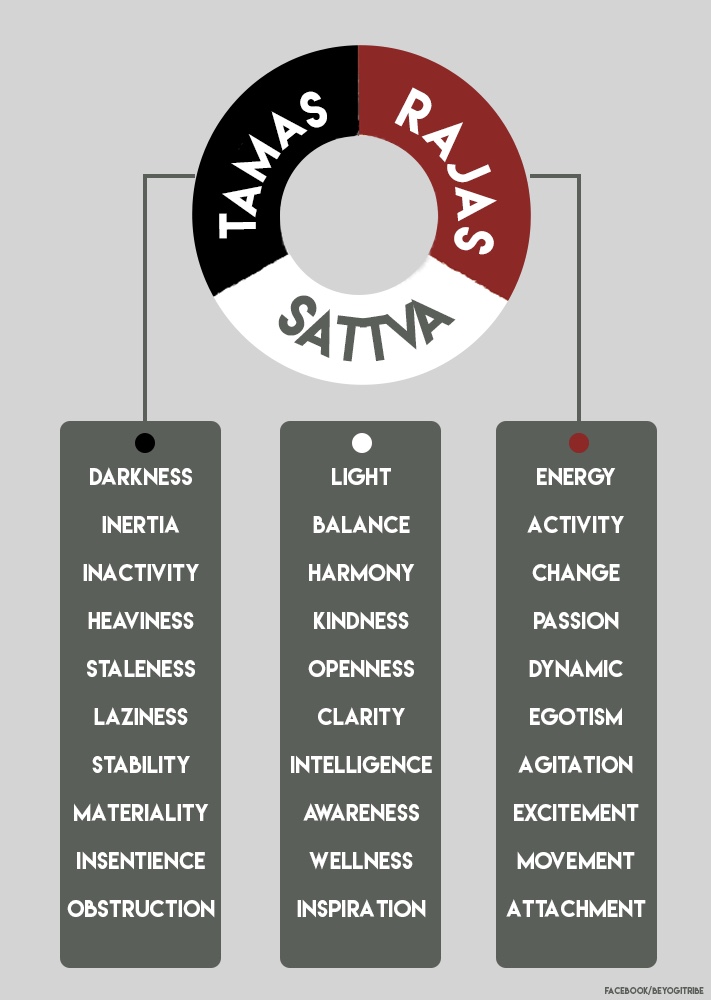August 30 – Yoga Sutra Discussion

One of the questions that arose in the last discussion was about the last Sutra on pain, II.17 – “the cause of pain is the association or identification of the seer with the seen and the remedy lies in their dissociation.” Good thing we have more Sutras to cover this very topic!
What is the “seer” and what is the “seen”? The answer lies in a foundational philosophy of yoga covered in the next sutras: we all have a pure consciousness within us called a Purusa (the “seer”) which is unchanging and eternal, while all else is Prakrti (Nature, or “the seen”). Finding out where one begins and the other ends is where the practices of yoga become necessary. We have to develop awareness and discrimination regarding what is ever changing and what is eternal, what is truly “I” and what is “not I”.
The next sutras we will cover begin to discuss this relationship between the “seer” and “the seen”, Purusa and Prakrti:
II.18 “Nature, its three qualities, sattva, rajas and tamas, and its evolutes, the elements, mind, senses of perception and organs of action, exist eternally to serve the seer, for enjoyment or emancipation.”
II.19 “The gunas generate their characteristic divisions and energies in the seer. Their stages are distinguishable and non-distinguishable, differentiable and non-differentiable.”
II.20 “The seer is pure consciousness. He/she witnesses nature without being reliant on it.”
II.21 “Nature and intelligence exist solely to serve the seer’s true purpose, emancipation.”
II.22 “The relationship with nature ceases for emancipated beings, its purpose having been fulfilled, but its process continues to affect others.”
II.23 “The conjunction of the seer with the seen is for the seer to discover his own true nature.”
The three gunas, as mentioned above, are the energetic qualities of Nature. They show up in all things to varying degrees and can have positive and negative qualities to them depending on their activation.
- Sattva – Luminocity, balance, clarity
- Rajas – Vibrancy, creative energy, agitation
- Tamas – Inertia, stability, dullness
As we start to study our actions and reactions within the context of yoga, we can start to find out where and how these gunas are present. They ultimately are here to bring us knowledge and awareness about our True Self so that when we become “emancipated” we will cease to be affected or disturbed by them.
CONTEMPLATIONS:
- Outside the very physical manifestations of yoga, have you been able to be sensitive to any energetic changes within yourself? For example, certain effects of asana categories? The differentiation between mind and body during Savasana? etc…
- What do you identify with most ? Body, Mind, Emotion? Does that identification have a certain “quality” to it? Balanced, Energetic, Dull??
- Can you identify ways that the practice of yoga has become a tool for you to better know yourself? Less an “activity” and more a “discovery”?
- Can you see how things around you effect your energy and throw you off balance? Is there any way you could imagine all those same things happening around you without the same effects or disturbances? What do you think it would take to have that happen?
See you Sunday, August 30th at 11:00am for our next LIVE Zoom discussion!!